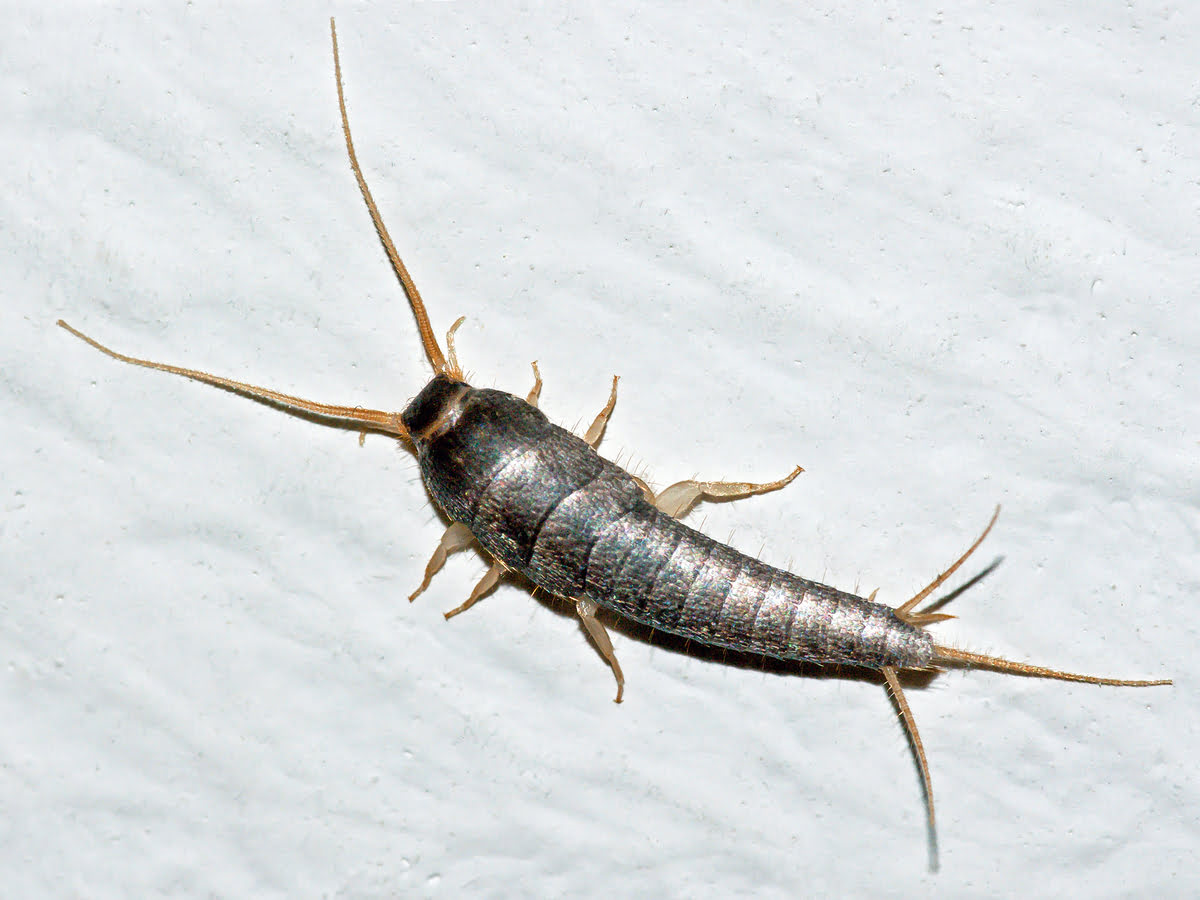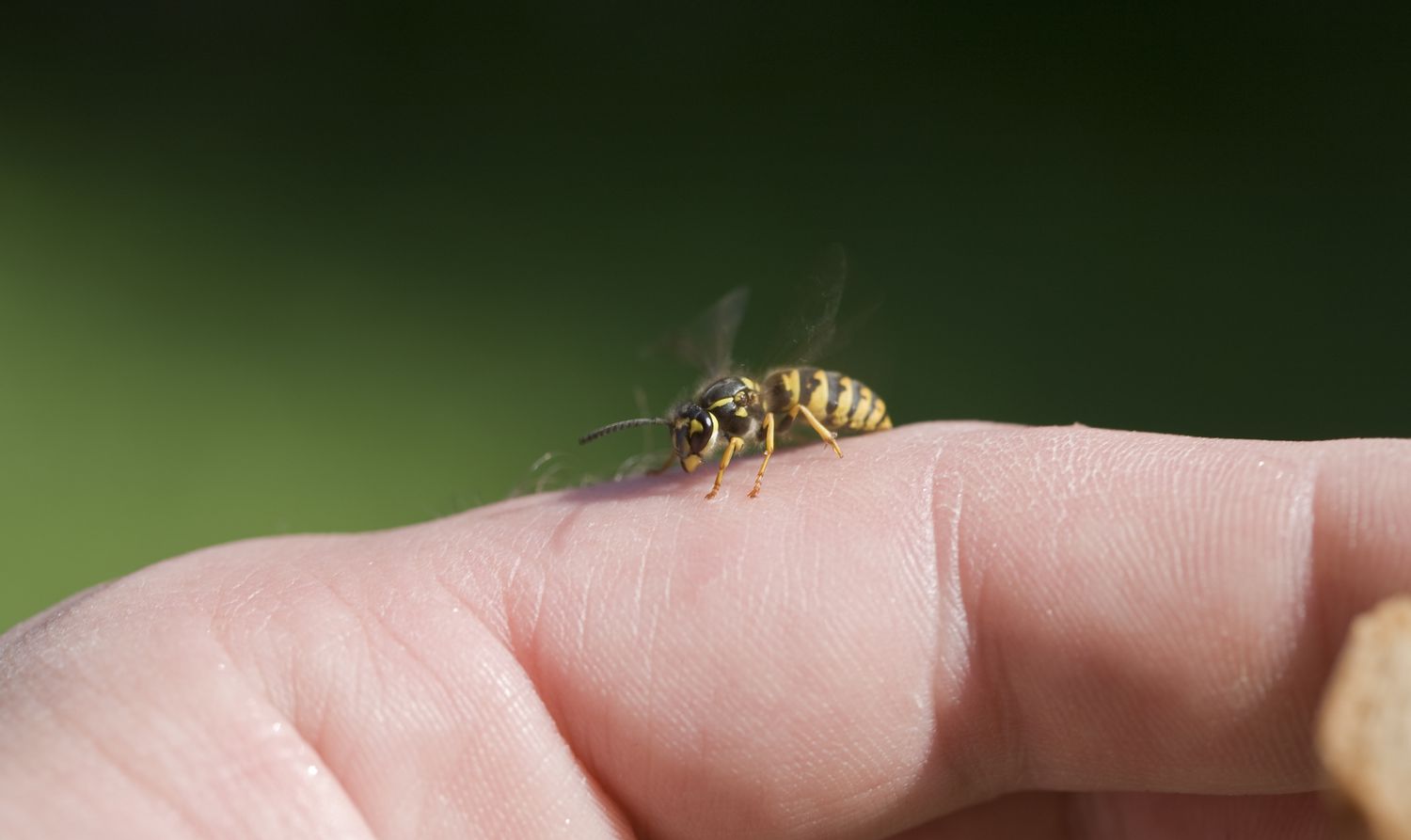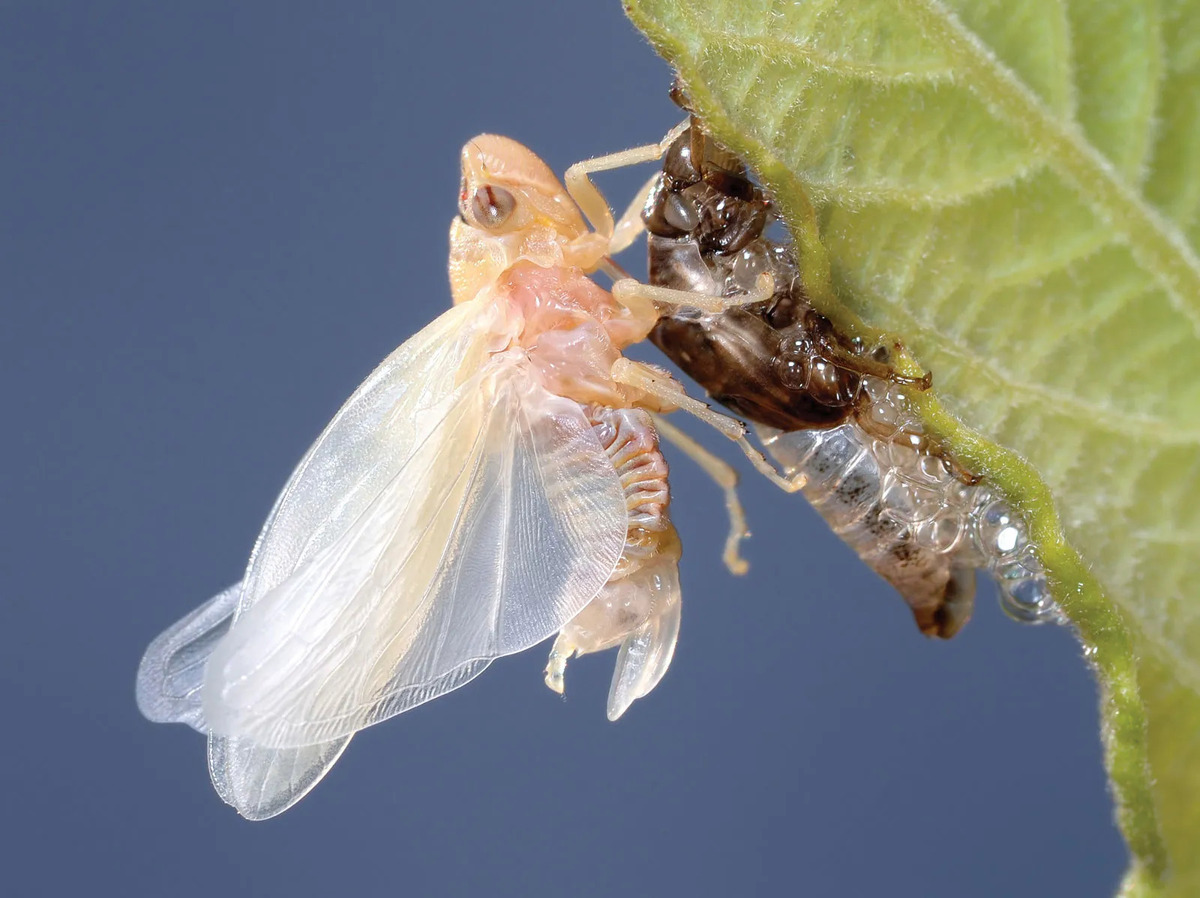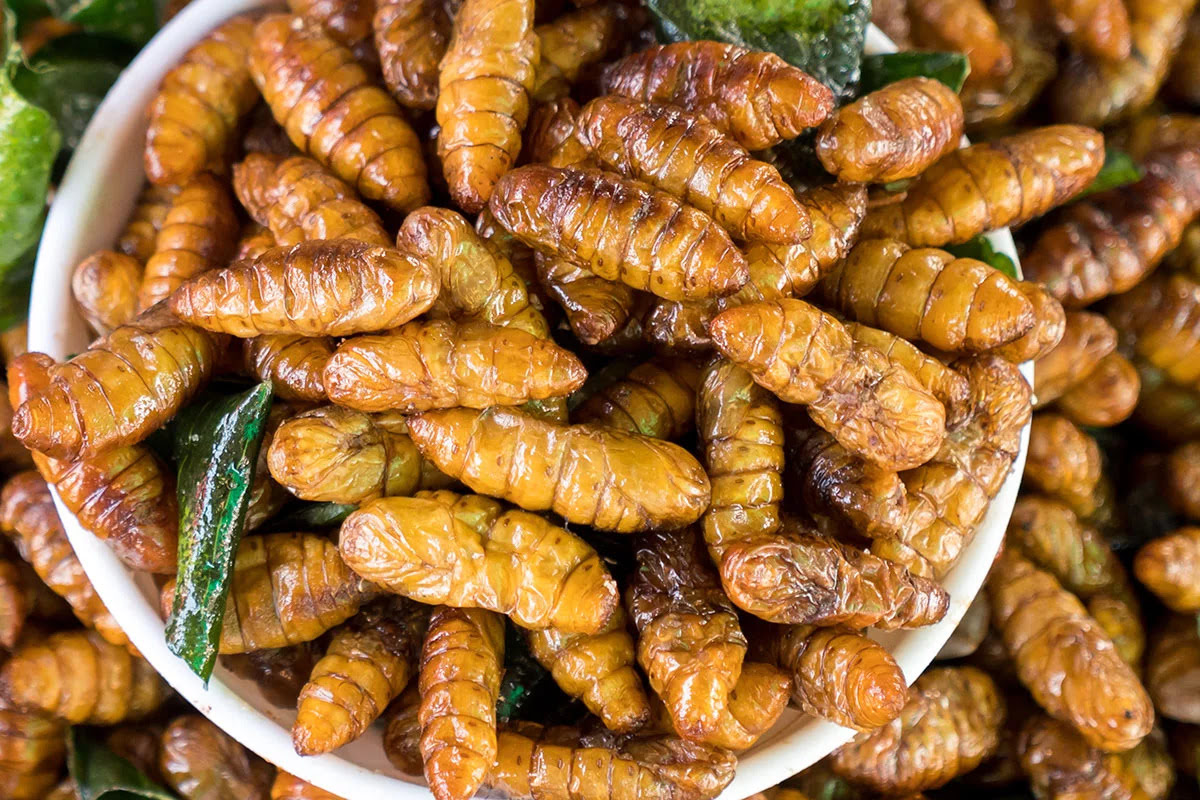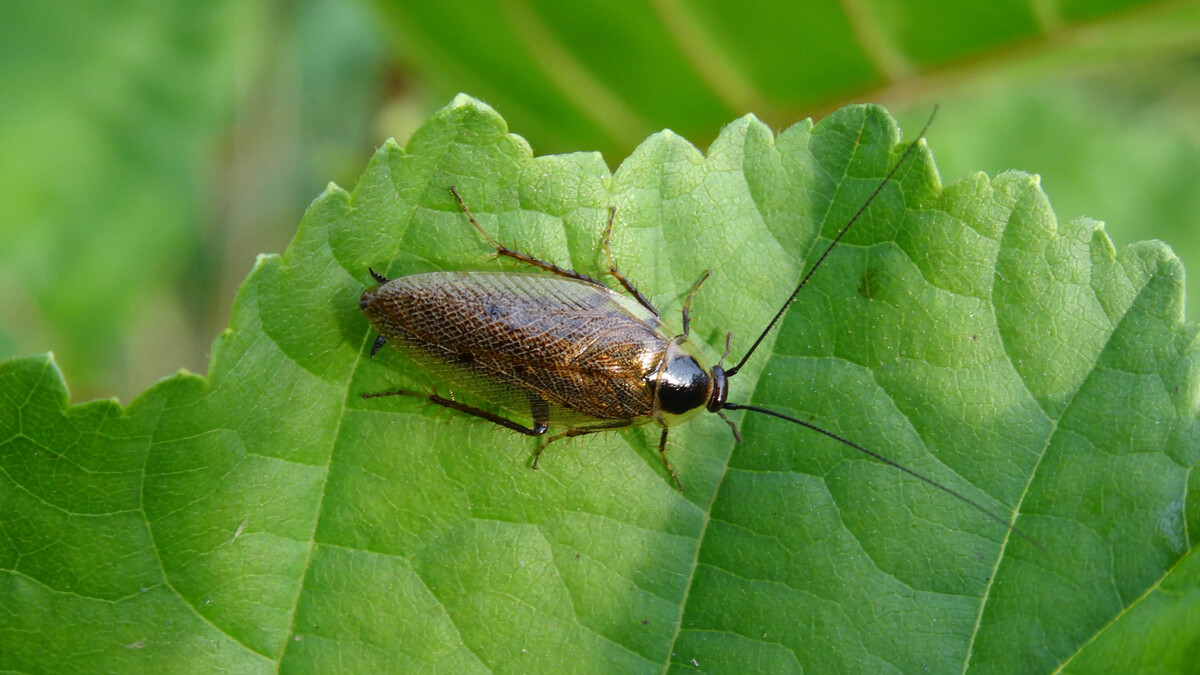Home>Gardening News and Trends>Latest News>What Is Aphids Insects


Latest News
What Is Aphids Insects
Modified: January 22, 2024
Discover the Latest News on Aphids Insects and Learn More About their Characteristics, Control Methods, and Prevention Strategies. Stay Informed and Protect Your Plants Today!
(Many of the links in this article redirect to a specific reviewed product. Your purchase of these products through affiliate links helps to generate commission for Chicagolandgardening.com, at no extra cost. Learn more)
Table of Contents
Introduction
Aphids, also known as plant lice, are tiny insects that belong to the superfamily Aphidoidea. These miniature pests are commonly found in gardens, agricultural fields, and greenhouses, where they feed on a wide variety of plants. Though they may seem insignificant due to their size, aphids can cause significant damage to plants and crops if left unchecked.
With their soft bodies and long, slender legs, aphids come in a range of colors, including green, yellow, brown, and black. They have a distinctive pear-shaped body, a pair of antennas, and a tube-like structure called a rostrum, through which they suck sap from plants.
The life cycle of an aphid is relatively short, but they have a remarkable ability to reproduce rapidly. In favorable conditions, a single aphid can give rise to a colony of hundreds or even thousands in just a matter of weeks. Their quick reproductive cycle, coupled with their feeding habits, makes aphids a formidable pest for gardeners and farmers.
In this article, we will explore the characteristics of aphids, their life cycle, feeding habits, the damage they cause to plants, as well as methods of prevention and control to help you protect your plants from these pesky insects.
Characteristics of Aphids
Aphids possess several distinct characteristics that set them apart from other insects. These traits contribute to their ability to thrive and reproduce rapidly:
- Soft bodies: Aphids have soft, plump bodies that are typically less than 1/8 inch long. This allows them to easily maneuver through foliage and feed on plants.
- Pear-shaped body: The body shape of aphids resembles a pear, with a rounded abdomen and a narrower head.
- Antennas: Aphids have a pair of long, slender antennas on their heads. These antennas help them detect environmental cues and locate suitable feeding sites.
- Siphoning mouthparts: Aphids possess a specialized tube-like structure called a rostrum, which they use to pierce plant tissues and suck out the sap. This siphoning mouthpart is unique to aphids and allows them to access the nutrient-rich fluids within plants.
- Waxy coating: Some species of aphids have a waxy or powdery coating on their bodies, giving them a fuzzy or dusty appearance. This coating helps protect them from predators and environmental factors.
Aphids are known for their ability to reproduce both sexually and asexually. This adaptability, along with their rapid development and vast numbers, allows them to quickly establish large populations on plants.
Furthermore, aphids have certain defense mechanisms that help them survive and thrive. They produce a sugary substance called honeydew as a byproduct of sap consumption. Honeydew attracts ants and other insects that in turn protect the aphids from natural predators. Some aphid species also have specialized glands that produce defensive chemicals to deter predators.
Understanding the characteristics of aphids is crucial in effective pest management. By recognizing their physical attributes and unique adaptations, gardeners and farmers can employ strategies to minimize the impact of these pests on their plants.
Life Cycle of Aphids
The life cycle of aphids consists of several stages, each contributing to their rapid reproduction and population growth. Understanding their life cycle is essential in developing effective control measures. Here are the key stages in the life cycle of aphids:
- Egg stage: The life cycle begins with the egg stage. Female aphids lay eggs on the underside of plant leaves or in crevices. These eggs are usually small, oval-shaped, and vary in color depending on the species. Each egg contains a developing aphid nymph.
- Nymph stage: Once the eggs hatch, nymphs emerge. Nymphs resemble smaller versions of adult aphids but lack wings. They go through several molting stages, shedding their skins each time they grow. Nymphs actively feed on plant sap, promoting their growth and development.
- Winged stage: As nymphs mature, some develop wings. These winged aphids, also known as alates, have the ability to disperse and establish new colonies in search of suitable host plants. They play a crucial role in spreading aphids to different locations.
- Reproductive stage: Once aphids reach maturity, they enter the reproductive stage. Aphids are capable of reproducing both sexually and asexually. In favorable conditions, females can give birth to live nymphs without mating, a process called parthenogenesis. This asexual reproduction allows aphid colonies to multiply rapidly.
- Overwintering stage: Towards the end of the growing season, some aphids will enter an overwintering stage. This stage involves the production of specialized eggs that can survive harsh winter conditions. These eggs remain dormant until the following spring when the growing season resumes.
The life cycle of aphids can vary in duration depending on various factors such as temperature, host plant availability, and species. In favorable conditions, aphids can complete their life cycle in as little as a few weeks, leading to exponential population growth.
Understanding the life cycle of aphids can help gardeners and farmers implement timely control measures to disrupt their reproduction and minimize their damage to plants.
Reproduction of Aphids
Aphids are renowned for their exceptional reproductive abilities, which contribute to their rapid population growth. They have two primary methods of reproduction: sexual and asexual.
Asexual Reproduction: Asexual reproduction, also known as parthenogenesis, is the most common form of reproduction for aphids. Female aphids have the remarkable ability to produce live offspring without the need for fertilization. This process allows them to rapidly increase their population size under favorable conditions. These offspring, known as nymphs, are genetically identical to their mothers.
Each female aphid can give birth to multiple nymphs in a short period, with some species capable of producing 20 or more nymphs per day. This exponential population growth can lead to a significant infestation of aphids in a short period.
Sexual Reproduction: Sexual reproduction occurs in aphids as a means of diversifying their genetic makeup. It typically happens when the population reaches high density, and environmental conditions become less favorable. During sexual reproduction, males develop, and females produce eggs that require fertilization.
Male aphids are born from specialized eggs known as winter eggs or male bud eggs. These eggs are resistant to adverse conditions and allow for the production of males in preparation for sexual reproduction. Once males are present within the population, they mate with the females, resulting in the production of fertilized eggs.
These fertilized eggs are usually produced at the end of the growing season and serve as overwintering eggs. They are capable of surviving harsh winter conditions until the following spring when they hatch and initiate a new generation of aphids.
Both asexual and sexual reproduction are significant factors contributing to the high reproductive potential of aphids. This reproductive strategy allows them to colonize new plants, adapt to changing environmental conditions, and rapidly increase their population size, posing a challenge for plant growers and agricultural professionals.
Feeding Habits of Aphids
Aphids are destructive pests primarily because of their feeding habits. They are sap-sucking insects that rely on plant fluids for nourishment. Here is an overview of the feeding habits of aphids:
Sap-Sucking: Aphids use their specialized mouthparts, known as rostrums, to pierce plant tissues and extract sap. The sap is a nutrient-rich fluid that flows through the phloem vessels of plants. Aphids target various parts of plants, including leaves, stems, buds, and even roots, depending on the species.
Phloem Feeding: Once aphids puncture the plant, they insert their rostrum into the phloem vessels to access the sugary sap. The phloem vessels transport vital nutrients, such as sugars and amino acids, from leaves to other parts of the plants. By tapping into these vessels, aphids have a direct source of nutrients.
Honeydew Production: As aphids feed on plant sap, they excrete excess fluids in the form of honeydew. Honeydew is a sticky, sugary substance that can accumulate on leaves and other plant surfaces. It serves as a food source for other insects, such as ants and wasps, which can form mutualistic relationships with aphids.
Feeding Damage: Although aphids extract only a small amount of sap from each plant, their sheer numbers and constant feeding can have a severe impact on plant health. The depletion of sap can weaken plants, leading to stunted growth, yellowing leaves, and reduced yields in agricultural crops.
Aphids can also transmit viral diseases from plant to plant as they move from host to host. These viral infections can further compromise plant health and productivity.
The feeding habits of aphids make them formidable pests in gardens, farms, and greenhouses. Monitoring and managing aphid populations are essential to protect plants from damage and ensure healthy growth.
Damage Caused by Aphids
Aphids are notorious for the damage they can inflict on plants. While they may be small in size, their feeding habits and population growth can have significant consequences. Here are some of the primary ways in which aphids can damage plants:
- Stunted Growth: Aphids extract nutrients from the phloem vessels of plants, depriving them of essential resources. This nutrient loss can lead to reduced growth and development. Young plants are particularly vulnerable to aphid infestations, which can stunt their growth and delay their maturity.
- Leaf Curling and Distortion: Aphids inject saliva into plant tissues as they feed, which can cause plant cells to deform and curl. Infested leaves may take on a distorted appearance, appearing twisted, puckered, or curled. This distortion can disrupt photosynthesis and affect the overall health of the plant.
- Yellowing Leaves: Aphid feeding can result in the discoloration of leaves, leading to yellowing or browning. This discoloration occurs due to the depletion of nutrients and the accumulation of toxic substances left behind by aphids. Yellowed leaves not only look unsightly but may also impact the plant’s ability to produce energy through photosynthesis.
- Wilting and Defoliation: In severe cases, aphid infestations can lead to wilting and defoliation of plants. When large numbers of aphids feed on a single plant, they can cause excessive stress, leading to the loss of leaves and eventual death of the plant.
- Viral Spread: Aphids can transmit viral diseases from plant to plant as they move and feed on different hosts. These viruses can cause further damage and deformities in plants, resulting in reduced yields and economic losses for farmers.
Aphids are also known to attract other pests, such as ants, which form symbiotic relationships with them. Ants feed on the sweet honeydew excreted by aphids and, in turn, protect the aphids from predators. This mutualistic relationship can exacerbate the aphid infestation and make control measures more challenging.
Recognizing the signs of aphid damage is crucial in implementing timely control strategies to mitigate their impact and protect the health and productivity of plants.
Common Species of Aphids
There are numerous species of aphids that can be found worldwide, each with their own unique characteristics and preferred host plants. Here are some of the most common species of aphids:
- Green Peach Aphid (Myzus persicae): This is one of the most widespread and destructive aphid species. It primarily infests fruit trees, vegetables, and ornamental plants. The green peach aphid can transmit more than 100 plant viruses.
- Cabbage Aphid (Brevicoryne brassicae): As the name suggests, this aphid species targets cabbage family plants, including broccoli, cauliflower, and Brussels sprouts. They can cause significant damage to the leaves and slow the growth of the plants.
- Woolly Aphid (Eriosomatinae): The woolly aphid species is characterized by its white, fuzzy appearance. They commonly infest apple, pear, and other fruit trees. These aphids can weaken the tree and leave behind a sticky honeydew residue.
- Rose Aphid (Macrosiphum rosae): Rose aphids are known for infesting roses and other ornamental plants. They have a reddish-brown or green coloration and can cause stunted growth and distorted blooms.
- Black Bean Aphid (Aphis fabae): This aphid species attacks various legume plants, including beans, peas, and lentils. They can reproduce rapidly and cause significant damage to the foliage, leading to reduced yields.
- Potato Aphid (Macrosiphum euphorbiae): Potato aphids primarily infest potato plants but can also attack other crops such as tomatoes, peppers, and eggplants. They can transmit viruses and deplete the plant’s resources.
- Cotton Aphid (Aphis gossypii): Cotton aphids are a common pest in agricultural settings. They feed on cotton plants, causing leaf wilting, reduced fiber quality, and yield losses.
These are just a few examples of the wide variety of aphid species that exist. Each species has its own unique characteristics, preferred host plants, and potential for damage. Identifying the specific aphid species infesting your plants can help in implementing targeted control measures.
Monitoring and managing aphid populations are crucial in preventing widespread infestations and minimizing the damage caused to plants.
Natural Predators of Aphids
Aphids have a long list of natural enemies in the insect world that help keep their populations in check. These natural predators play a vital role in controlling aphid infestations and maintaining a balance in the ecosystem. Here are some of the common natural predators of aphids:
- Ladybugs (Coccinellidae): Ladybugs are perhaps the most well-known aphid predators. Both adults and larvae of ladybugs feed on aphids, consuming large numbers of these pests in a short span of time.
- Lacewings (Chrysopidae): Lacewing larvae are voracious predators of aphids. They have long, slender bodies with sharp mandibles that they use to capture and consume aphids. Lacewings also lay their eggs near aphid colonies, ensuring a steady supply of food for their young.
- Hoverflies (Syrphidae): Adult hoverflies are important pollinators, but their larvae are predatory. Hoverfly larvae, often referred to as syrphid maggots, feed on aphids by injecting digestive enzymes into them.
- Parasitic Wasps (Aphidiinae): Parasitic wasps are tiny insects that lay their eggs inside aphids. The wasp larvae then consume the aphid from the inside, eventually killing it. These wasps are highly specialized and have a specific host range.
- Predatory Beetles (Coleoptera): Various species of beetles feed on aphids. Examples include convergent lady beetles (Hippodamia convergens) and soldier beetles (Cantharidae). These beetles are agile predators that actively seek out aphid infestations.
- Birds: Several bird species are known to feed on aphids. Chickadees, sparrows, and swallows, among others, include aphids in their diet, especially during the breeding season when they need to provide an abundant supply of protein to their young.
These natural predators exhibit different feeding strategies and behaviors, but they all contribute to keeping aphid populations in check. By preying on aphids, they help maintain a balance in the ecosystem while reducing the damage caused to plants.
Encouraging the presence of these natural predators in gardens and agricultural settings can be a beneficial practice in aphid control. Avoiding the use of broad-spectrum insecticides that may harm these beneficial insects is essential to maintain a healthy aphid predator population.
Prevention and Control of Aphids
Preventing and controlling aphid infestations is vital for the health and productivity of plants. Here are some strategies for managing aphids:
- Monitor Plants Regularly: Regularly inspect plants for early signs of aphid infestation, such as distorted leaves, yellowing, or the presence of honeydew. Early detection allows for prompt action and prevents the infestation from spreading.
- Remove Infested Plant Parts: If you spot aphids on a plant, prune and remove heavily infested parts to prevent the spread to other plants. Dispose of the infested plant material properly to avoid reintroducing aphids to your garden or farm.
- Encourage Natural Predators: Create a habitat that attracts natural aphid predators, such as ladybugs, lacewings, and birds. Providing shelter, water sources, and a variety of flowering plants will help attract and sustain beneficial insects and birds.
- Introduce Biological Controls: Consider introducing beneficial insects, such as ladybugs or lacewings, to your garden or farm to help control aphid populations naturally. These insects can be purchased from reputable suppliers.
- Use Reflective Mulch: Reflective mulch, such as aluminum foil or reflective plastic, can deter aphids by creating a visually confusing environment. This can help reduce the colonization of aphids on plants.
- Practice Crop Rotation: Rotate crops annually to disrupt the cycle of aphids. Remember that some aphid species specialize in certain host plants, so rotating crops can help break their life cycle and reduce infestations.
- Apply Natural Remedies: Some natural remedies, such as insecticidal soaps, neem oil, or garlic spray, can be effective in controlling aphids. However, it’s essential to follow the instructions carefully and apply these remedies when beneficial insects are less active to minimize harm to beneficial insects.
- Water and Fertilize Appropriately: Providing proper irrigation and fertilization helps maintain healthy plant growth and can make plants less susceptible to aphid infestations.
- Practice Good Garden Hygiene: Clean up plant debris, fallen leaves, and weeds regularly to reduce hiding places and overwintering sites for aphids.
It’s important to remember that a combination of preventive measures and control strategies may be necessary for effective aphid management. It is recommended to use an integrated pest management (IPM) approach, which involves a combination of cultural, biological, and, if necessary, chemical control methods.
By implementing these preventive and control measures, you can minimize the damage caused by aphids and maintain the health and vitality of your plants.
Conclusion
Aphids are tiny insects with a penchant for plant sap, but their impact on plants and agriculture can be significant. Their rapid reproduction, feeding habits, and transmission of plant diseases make them formidable pests. Understanding their characteristics, life cycle, and feeding habits is crucial in effectively managing and controlling aphid infestations.
It’s important to be vigilant and regularly monitor plants for signs of aphids. Early detection allows for prompt action and prevents the infestation from spreading. Encouraging natural predators such as ladybugs, lacewings, and birds can be a sustainable approach to aphid control. Introducing biological controls and using reflective mulch can also help deter and manage aphid populations.
In cases where aphid populations are extensive and causing significant damage, natural remedies, and selective insecticides may be necessary. However, it’s important to exercise caution and choose products that have minimal impact on beneficial insects and the environment.
Prevention is always better than cure when it comes to aphids. Implementing good garden hygiene practices, practicing crop rotation, and providing proper plant care can help minimize the risk of aphid infestations. By maintaining healthy plants, you make them more resilient and less attractive to aphids.
Remember that managing aphids requires an integrated approach – combining prevention, biological controls, and targeted interventions when necessary. By employing these strategies, you can protect your plants from the damaging effects of aphids and maintain a thriving and productive garden or farm.
Stay vigilant, stay proactive, and with proper management, you can keep aphids and their damage at bay, allowing your plants to flourish and thrive.
